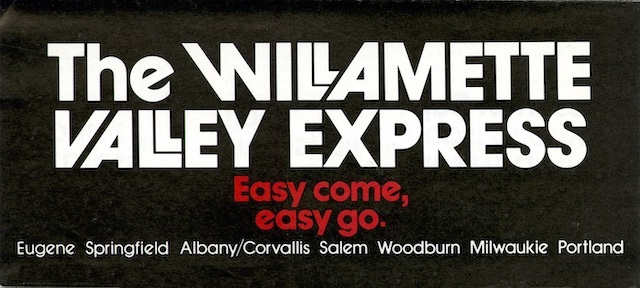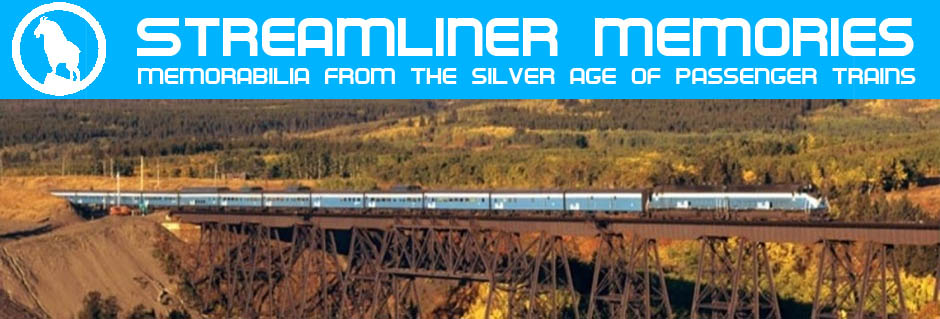In 1980, Amtrak persuaded the state of Oregon to subsidize two trains a day between Eugene and Portland. Known as the Willamette Valley Express, the train lasted 17 months before the state, hard pressed by a major recession, stopped funding it. Amtrak later convinced the state to renew its subsidies and today the trains operate under the name of Cascades.
 Click image to download an 2.0-MB PDF of this brochure.
Click image to download an 2.0-MB PDF of this brochure.
I was on the very first run of the Willamette Valley and wrote an article about it for Passenger Train Journal. Southern Pacific president Ben Biaginni, who wasn’t a big fan of Amtrak, gave a speech at the dedication and concluded, “Now, let’s get this train moving so we can get it out of the way of our freight trains.” The audience half-heartedly laughed, not sure whether he was serious or trying to be funny.
This brochure advertising the train made it sound attractive, yet at the same time suggests reasons why it might have failed to attract more than half the projected number of daily riders. It notes that train riders could take advantage of downtown free-fare zones in both Portland and Salem, though I wonder if the Salem zone actually extended to the train station, which was far from that city’s downtown. But it also lists potential destinations that were pretty much out of reach to train riders relying on public transport, including Oregon State University and a tourist train in Cottage Grove 20 miles south of the Willamette Valley‘s southern terminus.
The brochure claimed the train operated four times a day. This was true in a sense as it went twice northbound and twice southbound, but most people would call that just twice a day. It also claimed the train was cheaper than driving: fares of 10 cents a mile, the brochure said, were less than the then-average cost of driving at 18 cents a mile. But that meant that two people traveling together could save money by driving. Finally, the schedules show the train took nearly 3 hours for what by car would be a two-hour trip.
Amtrak’s reluctance to offer discounted fares was one of the factors that annoyed the state and led it to not renew the trains. Aside from these operational details, Amtrak’s advertising was pretty lame and obviously had been designed by a committee.
Early in its history, Amtrak warped Cunard’s snappy slogan, “Getting there is half the fun,” into the clumsy, “Because getting there should be as much fun as being there.” In the case of the Willamette Valley, the slogan “Easy come, easy go” was less meaningful to potential riders and more a reflection of what many Oregon taxpayers thought when they saw half-empty trains running up and down the I-5 corridor.
